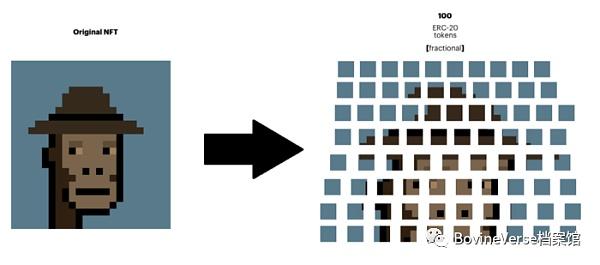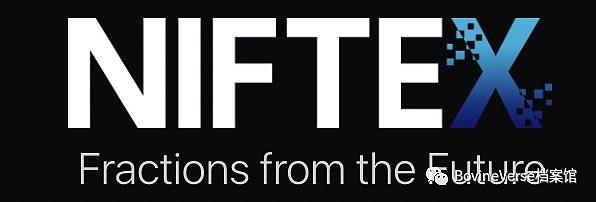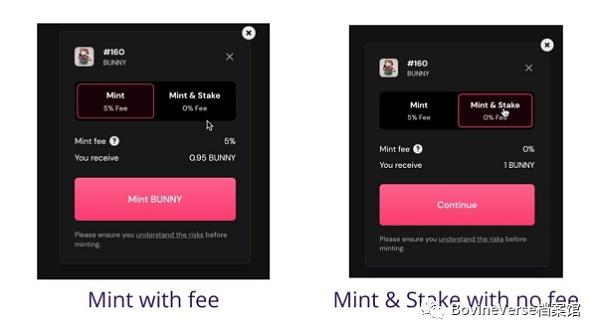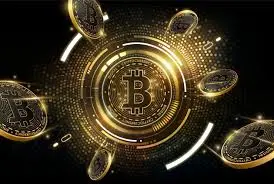Chapter 10: NFT Fragmentation
On June 11, 2021, PleasrDAO purchased the internet's most iconic meme, DogeNFT, for 1629 ETH, valued at approximately $4 million at the time of the transaction. Aside from accumulating generational wealth, the general public has almost no opportunity to acquire ownership of this special DogeNFT due to its astronomical price.

Just like traditional artworks and even real estate, the price of unique NFTs can be prohibitive, making it difficult for many to access the most popular pieces. If holders want to sell their NFTs immediately, they must look for buyers with sufficient funds or significantly lower the price to reduce the entry barrier. This results in a lack of liquidity for NFTs, as they cannot be easily exchanged for money or other assets.
Unless you are a professional NFT appraiser, measuring the intrinsic value of an NFT can also be challenging. Of course, in some cases, rarity can be determined, but there are many other unquantifiable factors, such as aesthetics, social prestige, and cultural significance—who can say one NFT is more valuable than another?
Without reliable price references, NFTs are difficult to use as collateral for more complex financial products. For example, people can easily use ETH as collateral to borrow other assets like USDC because ETH is traded 24/7 in global markets. However, due to the much lower trading frequency of NFTs, their prices cannot be easily determined at any given moment.
For instance, if you want to use your NFT as collateral to extract a USDC loan, how much USDC would someone be willing to lend you? To make NFTs a viable form of collateral, highly precise real-time pricing is required. In short, there are several obstacles to overcome before NFTs become an attractive asset class.
Here are some of the challenges it faces:
- Lack of liquidity—leading to high slippage during buying and selling
- Lack of market pricing—making valuation difficult
- Not a good collateral—resulting in low capital efficiency
- Significant capital expenditure—needed to gain exposure to highly valued NFTs.
The challenges highlighted above have led the NFT community to ask the question—what if there was a way to purchase only a portion of an NFT rather than the whole?
Why do we need to split NFTs?

Enter NFT fractionalization. NFT fractionalization aims to make NFTs more tradable by making them divisible. This allows investors with less capital to own a piece of unique, high-value NFTs that were previously out of reach.
In September 2021, many Doge enthusiasts had the opportunity to gain partial ownership of the aforementioned DogeNFT, as PleasrDAO decided to fractionalize the NFT and auctioned off Doge tokens representing partial ownership of DogeNFT. This batch auction raised a total of 11,942 WETH, pushing the NFT's valuation to a record-breaking $225 million!
The fractionalized parts of NFTs are considered fungible. Because they are fungible, users can trade these decentralized NFT tokens through decentralized exchanges, similar to how fungible tokens are traded. Users can provide liquidity to decentralized exchanges, thereby reducing the slippage for others.
Just as Real Estate Investment Trusts (REITs) allow retail investors to own a portion of real estate, fractionalized NFTs also allow investors to own a part of valuable NFTs. Below, we will introduce three projects that address the NFT fractionalization issue—Niftex, Unicly, and NFTX.
Niftex

Niftex is one of the first decentralized NFT projects, launched in May 2020, well before the 2021 hype around NFTs. It allows users to create segmented NFTs known as shards.
Niftex initially focused on individual NFTs, such as Axies and CryptoPunks. While the first iteration of Niftex only allowed for the fractionalization of single projects, Niftex V2 allows users to create shards for a bundle of NFTs. Shard holders will also have governance rights over the underlying NFTs.
For example, if the potential NFT is a piece of land from Decentraland, any potential utility, such as rent, can be allocated to the shard holders. Niftex supports different types of NFTs that can be included in a single package.
Although Niftex initially utilized Uniswap V1, with the launch of Niftex V2, it has decided to leverage its own exchange to integrate features such as royalty distribution.
Royalty distribution is a feature that allows royalties to be allocated to NFT issuers with each sale of the NFT. NFT royalties can significantly increase artists' income, whereas traditionally, artists only benefit from the primary sales of their works.
With fractionalized NFTs, the NFTs are locked in a smart contract. This means that the sale of any NFT shard does not trigger the payment of royalties, as there is no change of ownership for the underlying NFT itself. With the launch of the exchange, Niftex introduced a new feature called artist trading fee royalties, where a portion of the trading fees is borne by the artists.
Niftex introduced acquisition terms for individual NFTs and bundled trades, allowing buyers a way to acquire the underlying asset even without collecting all the shards. Let’s look at an example to see how acquisition works in practice and how it is designed to prevent spam.
Suppose there are 100 shards available for an NFT, and the number of shards required to trigger an acquisition is 10%. The buyer wants to purchase the entire NFT for 100 ETH. The buyer would have to stake 10 shards and 90 ETH to trigger the acquisition. To cancel the acquisition, partial shareholders would have to purchase 10 shards at a bid price, totaling 10 ETH.

Unicly

Unicly is a relatively new player in the NFT space.
Users can lock an NFT collection through Unicly to issue fungible shared tokens called utokens, which represent ownership of the NFT collection. uTokens have governance rights over the collection, such as deciding which NFTs can be included in the collection. This structure is similar to an NFT fund, as Unicly supports different types of NFTs within a collection.
To redeem the underlying NFTs, a sufficient number of uToken holders need to vote to unlock the collection. Interestingly, there is no way to bid on the entire collection; buyers must bid on potential NFTs individually.
Each collection has its own voting threshold, set by the creator of the collection, which can be unlocked when the voting threshold is reached. After the voting ends, the respective highest bidders can claim the NFTs, while uToken holders can claim the ETH paid by the bidders.
There is a governance token called UNIC. UNIC holders can lock UNIC to receive xUNIC, which qualifies them for 0.05% of the protocol's amount.
Unicly's automated market maker (AMM) exchange is called UnicSwap, which is a fork of Uniswap V2. Users trading uTokens in a single swap are charged a 0.3% swap fee, of which 0.25% goes to the liquidity providers of uTokens. The remaining fees are used to buy back UNIC tokens, which are then distributed to xUNIC holders.

NFTX

While Niftex and NFTX may sound similar, they are entirely different. Unlike Niftex, NFTX does not support the decentralized fractionalization of individual NFTs. NFTX focuses on creating funds for NFTs with similar attributes, thereby helping to establish a floor price for specific types of NFTs.

NFTX funds are built using NFTs deposited by users into the vault. This process is known as minting. For example, users can deposit CryptoPunks into the CryptoPunk vault and receive PUNK tokens in return. However, some vaults may only allow certain subtypes, such as CryptoKitties (Gen0). As the name suggests, only Gen0 CryptoKitties are eligible for deposit into the vault.
The tokens of these funds follow the ERC-20 standard and are fungible. Users can choose to provide liquidity on decentralized exchanges like Sushiswap, with the default token pair being ETH.
With sufficient liquidity, NFTX funds help improve price discovery for specific types of NFTs. For example, if a PUNK token trades for $40,000, it means the floor price for each CryptoPunk is $40,000.
In the latest version, NFTX V2, users are charged fees when minting or redeeming NFTs.
The default fees are as follows:
- 5% minting fee
- 0% random redemption fee
- 5% target redemption fee
These can be changed at any time through governance voting by the vault owners.
For example, in the case of minting, if a user deposits a CryptoPunk into the vault, they will receive 0.95 PUNK tokens in return. The 0.05 PUNK tokens will be paid to the liquidity providers of the vault. If you stake these tokens for at least 48 hours, you can avoid paying the mint fee.

Users can redeem their NFTs at any time, and if they choose to redeem a random NFT, they can skip any fees. Alternatively, users can pay a premium (defaulting to a 5% target redemption fee) to choose a specific NFT. Therefore, if you do not want to lose them to other collectors, you should not store any NFTs with high monetary or sentimental value.
Project Examples

DAOFi
DaoFi launched Fragmented Art, a major art marketplace that introduced the NFT fractionalization market. Partial community members can enter a lottery to receive a portion of the NFT allocation. After the initial sale, trades occur on the secondary market through a bonding curve driven by DaoFi.

Fractional
Fractional allows users to create fractionalized NFTs. Users can own pieces of their favorite NFTs by purchasing partial ownership tokens of specific NFTs. The Doge NFT was fractionalized through this protocol.

NFT20
NFT20 is another NFT index fund provider, with its governance token named MUSE. Similar to NFTX, NFT20 funds support NFTs of the same price from the same project and offer flash loans for NFTs. For rarer items, auctions can start Dutch-style, with prices set by the owners.
Conclusion
In 2021, NFTs received unprecedented attention, with Beeple's $69 million artwork sale being astounding. Before NFT fractionalization, it was difficult to own high-priced NFTs. The goal of fractionalizing NFTs is to democratize the NFT market and allow retail traders to access this asset class.
The adoption of fractionalized NFTs is still relatively early, and they have the potential to disrupt the market for illiquid asset classes significantly. As of September 2021, the total locked value of Niftex, Unicly, and NFTX was still around $120 million. To put this number into perspective, it is just 0.1% of the $120 billion locked in Ethereum DeFi protocols during the same period.
As an asset class, NFTs have a long way to go to prove their profitability and sustainability. With the rise of the digital-native generation and the growing demand for alternative investments, fractionalized NFTs could become the dark horse of investment in the next decade.









